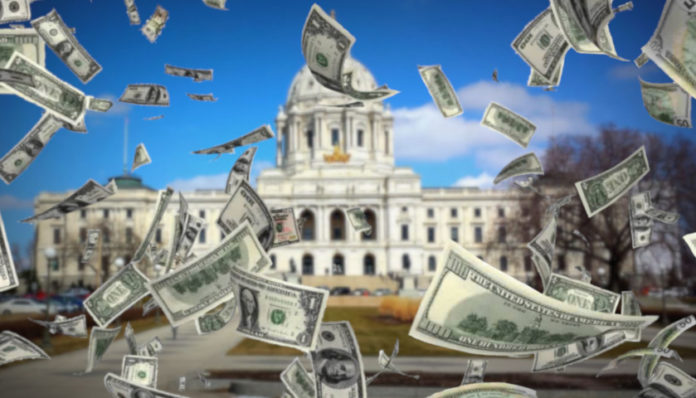Minnesota Management and Budget (MMB) has just announced that the state has a projected $1.6 billion budget surplus for the upcoming 2020 fiscal year. Once the money is sent to Minnesota’s reserve, or “rainy day” fund, which now totals $2.3 billion, the surplus comes to $1.3 billion.
In a way, this presents a bit of a problem for legislators in St. Paul, who now have to decide what to do—if anything—with this year’s surplus.
Democrats
Some Democrats, including Governor Tim Walz, are urging caution. “We must ensure Minnesotans are in the best position possible to weather whatever economic uncertainties come our way,” said Walz.
Other Democrats are saying that, because spending should also increase next year, the budget surplus doesn’t look as big as it seems. Number-two Democrat in the Minnesota House, Ryan Winkler (D-Minneapolis), said that “inflation” in the budget was “more than $1 billion.”
And Democrats are uniformly saying that tax cuts are not on the table.
Republicans
Yet Republicans are taking a different tack. First, they are pointing out that pushing back against Democrats’ tax-increase plans, and working with Democrats to pass a middle class tax cut, has paid off. State Senator Andrew Mathews (R-Milaca) said that “fiscally responsible management of our state finances coupled with no new taxes resulted in growing Minnesota’s economy, growing our state budget reserves to record levels, and a well over billion-dollar surplus.”
And Republicans are also arguing that this surplus should be used to further cut taxes, and vehicle fees. “Let’s return this surplus to the people who created it: hardworking Minnesotans,” said Mathews.
In the same vein, here’s what Senator David Senjem (R-Rochester) had to say: “I caution my fellow legislators not to use the budget surplus as an excuse to raise taxes or leverage additional fees. Instead, the surplus presents us with a real opportunity during the upcoming legislative session to make responsible investments in our state and its taxpayers. The surplus will allow us to explore additional middle-income tax cuts, a further phase-out of the Social Security income tax, and long-term road and bridge enhancements.”
Meanwhile, New House Republican Caucus member, Rep. Cal Bahr (R-East Bethel), took a slightly different tack, noting that Minnesota has a $53 billion debt load, yet Democrat Governor Tim Walz still insists on “maxing out the state credit card.” Instead, Bahr said Minnesota “should be paying cash for capital projects, and paying down our current debt.” Bahr’s fellow caucus member, Rep. Jeremy Munson (R-Lake Crystal), credited Trump’s tax cuts, and said that some of the surplus should be used to bring Minnesota’s tax law into conformity with Trump’s new federal tax law—which would help Minnesota farmers and small businesses.
The debt load
In line with Governor Walz, the MMB and its Commissioner, Myron Frans, is also urging caution. The budget projection will fluctuate with economic conditions, and isn’t a final number.
One thing state politicians should certainly consider is that when the credit cycle inevitably ends, the budget will look much-less healthy. Center of the American Experiment Economist John Phelan credits the federal tax cuts for Minnesota’s budget surplus, but states and federal governments should have a budget surplus at the tail end of an economic cycle—many will remember that Bill Clinton, not a tax cutter, ran a federal surplus at the end of the dot-com boom in the late 1990s. That said, Phelan agrees with Frans that caution is in order on the surplus.
Minnesota spends about $50 billion every year. And Minnesota’s $53 billion debt amounts to about $10,000 for every man, woman, and child in the state. But that doesn’t even count the state’s over-$18 billion in unfunded pension liabilities. And because the state’s pension funds—for public workers like police and teachers—assume a higher expected market-return than would be allowed in the private sector, Minnesota’s actual pension liability is much higher than $18 billion (the funds assume they will make more in the market than they likely will in reality). And if the market crashes, the unfunded liability will be even higher still.
In other words, maybe Minnesota’s state politicians shouldn’t count their chickens before they are hatched.


















